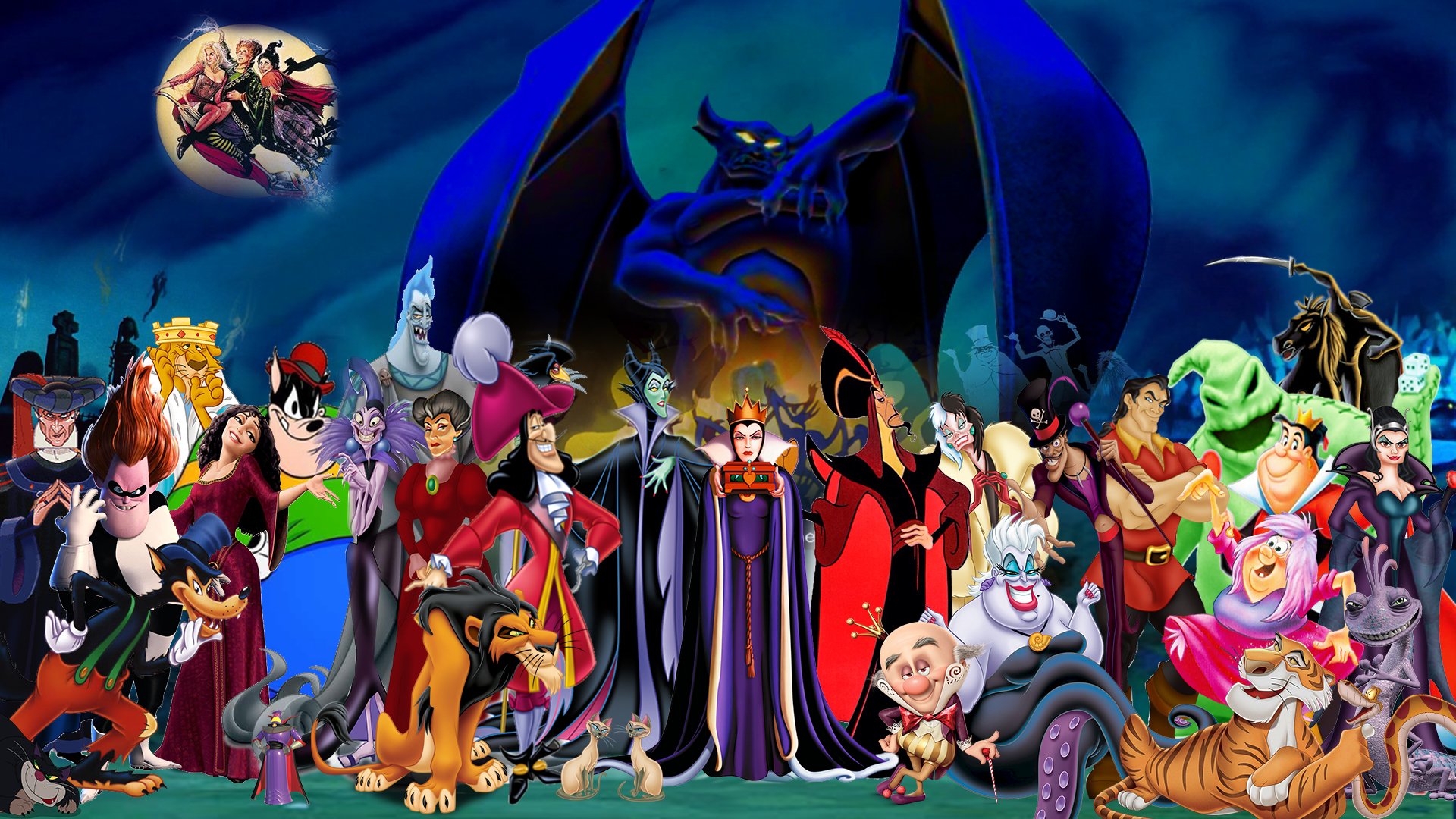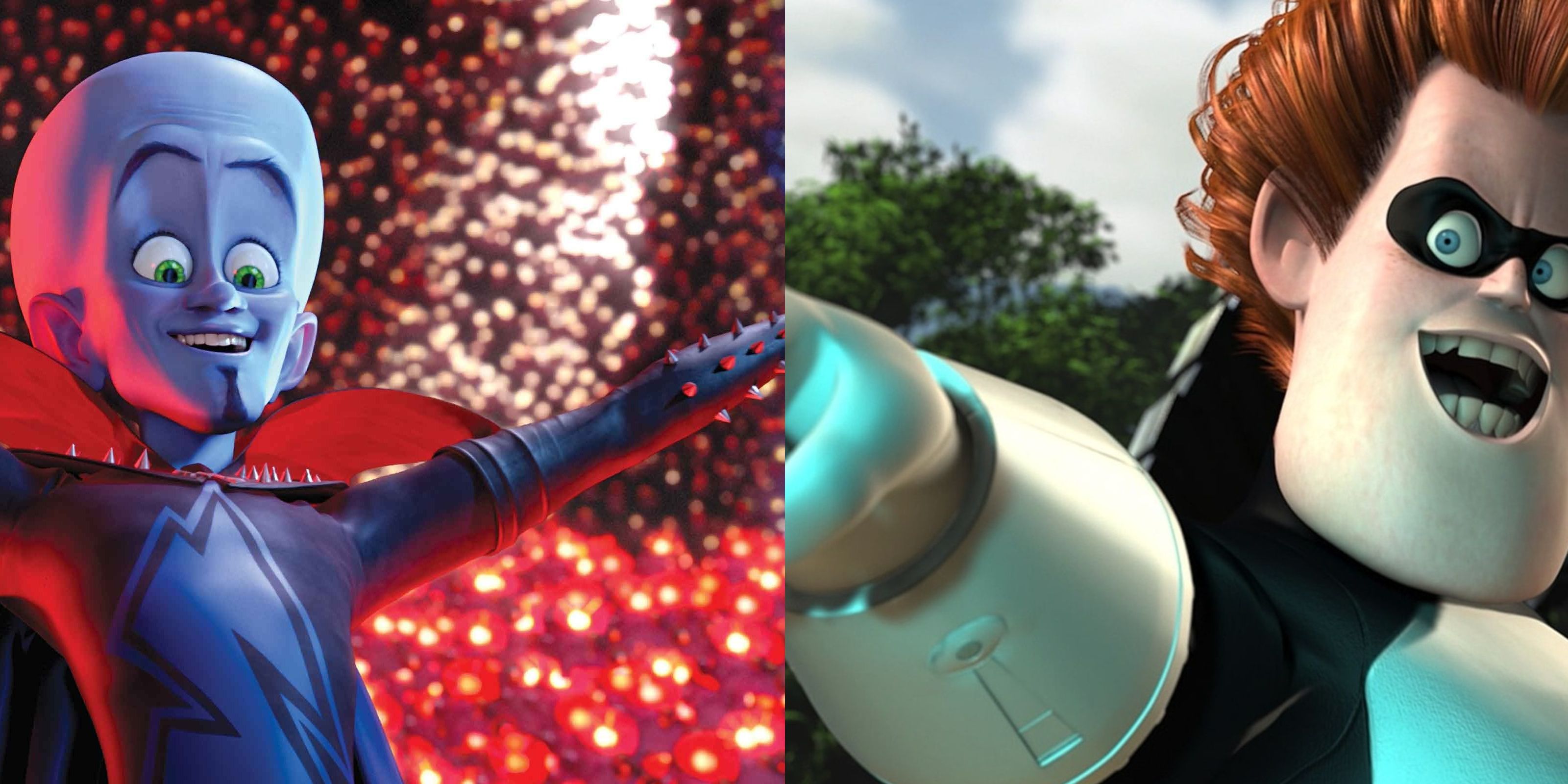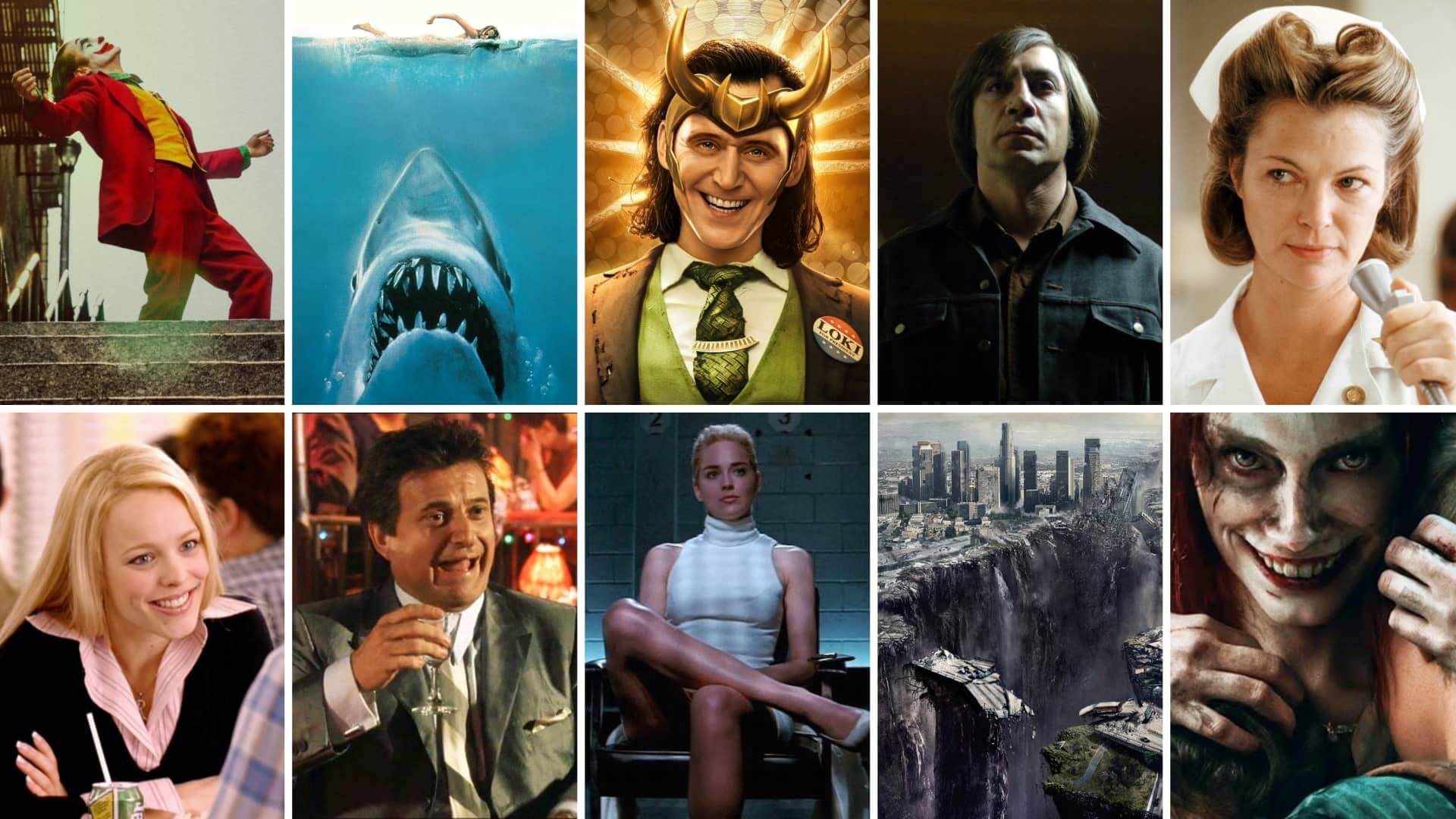Every compelling story, it seems, has a character who stands in the way, a force that creates tension and pushes the main figures to their limits. This character, often simply called the "villain," serves a very important purpose, acting as a kind of opposing force to the story's main individual or group. It is, in a way, about what happens when principles clash, or when one person's desires directly go against another's well-being.
You see, the idea of a villain goes beyond just being "the bad person." It is a concept that truly shapes how we feel about a story, giving us someone to root against and, sometimes, even someone to try and figure out. These figures, whether they are in a book, a play, or even a real-life account, often stir up strong feelings because of the things they do or the ideas they represent. We are, basically, drawn to how they make things happen, even if those things are not good.
So, when we talk about a "villain named" something, we are really talking about a specific type of character who, through their actions and their presence, helps to build the entire structure of the story. They are, in fact, the ones who bring about the challenges that the good people in the story must face, forcing them to change and grow. Without them, honestly, many tales would just not have the same kind of punch.
- Fit Bryce Adams Onlyfans
- Zeus Brewery
- Crust By Mack
- %D8%AF%D9%86%DB%8C%D8%A7 %D8%AC%D9%87%D8%A7%D9%86%D8%A8%D8%AE%D8%AA
- Teamworks Somerset
Table of Contents
- What Makes a Character a Villain?
- How Does a Villain Named Shape the Plot?
- Is a Villain Always Just Bad?
- The Impact of a Villain Named on the Hero
- How Does Society Label a Villain Named?
- The Function of a Villain Named in Narrative
- What About The Villainess Named?
- Can a Villain Named Break the Mold?
What Makes a Character a Villain?
When someone calls a character a "villain," they are often talking about a person in a story or a play who stands against the main good person. This opposition is pretty central to what makes them a villain. They are, in some respects, the counterpoint, the one who brings conflict to the story's main flow. Their very existence tends to be about creating difficulties for the hero, pushing them to make hard choices or face tough situations. This is, you know, what gives the story its push and pull.
How Does a Villain Named Challenge the Protagonist?
A villain, or a character we might call a "villain named" something specific, is typically someone who does things that are seen as wrong or goes against what most people think is right. They act as a sort of spark for certain ways of thinking that observers or readers find not good. It is, basically, their actions that get the ball rolling on the bad things that happen. These actions are often quite deliberate, too, not just accidental mishaps.
For example, a character could be considered a villain if they are a truly bad person who causes trouble for others or disobeys rules. This is, quite simply, a very common way to see them. They might do things that hurt people or break the rules that everyone else is supposed to follow. Their choices, you know, often lead to a lot of upset and problems for other people in the story. It is, in a way, their very nature to cause disruption.
How Does a Villain Named Shape the Plot?
A villain is usually defined as a bad or mean character who does bad things or causes trouble for others. This definition really highlights their role in creating problems within the story. They are, in fact, the ones who perform the harmful actions that the good characters must then react to. Without their choices, the story might not have much of a plot at all, honestly.
The Schemes of a Villain Named
The "villain named" in a story is often the one who comes up with clever, sometimes awful, plans to get what they want. They are, essentially, the ones who plot and scheme to bring about their goals, which usually involve causing harm or disruption to others. These plans are often quite intricate, too, requiring a lot of thought on their part. It is, in fact, their ability to think up such things that makes them such a strong force in the narrative.
Think about it, a villain is the "bad person," the one who thinks up truly terrible plots to, somehow, achieve their ends. These plots are often designed to mess things up for the main good person or for a whole group of people. They are, quite simply, the source of much of the trouble that happens. This means they are not just reacting; they are actively creating the difficult situations. This is, you know, a pretty big part of their identity in a story.
Is a Villain Always Just Bad?
It is interesting to think that a villain might have a good reason for their actions, at least in line with their own set of beliefs. They might not see themselves as evil, but rather as someone doing what is necessary or right according to their own principles. This adds, in some respects, a layer of depth to them, making them more than just a simple "bad person." It suggests, too, that their motivations can be complex, not just pure meanness.
The Justifications of a Villain Named
Sometimes, a character we call a "villain named" a certain way might truly believe they are doing the right thing, based on their own rules for living. This means their actions, even if they cause harm, are not always just for the sake of being mean. They might have a personal code or a way of looking at the world that makes their choices seem logical to them. This can, you know, make them even more interesting to consider.
For instance, a villain might do things that hurt people or break the rules because they want to get something very specific. Their actions are, in fact, a means to an end. This desire could be for power, for revenge, or even for a twisted idea of making things better. It is, basically, their personal drive that pushes them to act in ways that others find wrong. This shows that their actions are often tied to a goal, not just random acts of meanness.
The Impact of a Villain Named on the Hero
The main bad character in a story, a play, or other tale, often acts as the direct opposite of the hero. Their presence forces the hero to react, to grow, and to overcome big problems. They are, in some respects, the reason the hero has a story to tell at all. Without someone to stand against, the hero's journey would be, frankly, much less exciting or meaningful. It is, you know, the push from the villain that makes the hero shine.
How a Villain Named Defines the Protagonist
A character who embodies wickedness and causes harm, conflict, or bad deeds towards other characters, often the main good person, is what we generally think of as a villain. This type of "villain named" something specific is the one who brings the trouble that the main character has to deal with. Their bad actions are, in fact, the source of much of the story's tension. They truly represent the opposite of what the hero stands for, making the hero's qualities even clearer.
They are, basically, the character who performs mean, bad things on purpose. This intentionality is pretty key to their role. They are not just accidentally causing problems; they are making choices to create difficulties for others. This deliberate action is, in a way, what makes them a central part of the story's struggle. It is, you know, their will to do bad that drives much of the narrative forward.
How Does Society Label a Villain Named?
When people talk about a character as a villain, it is often because that character is seen as a bad person who hurts others or breaks the rules. This idea of a "bad person" is pretty simple, but it captures the core of how we often think about these characters. They are, essentially, the ones who do things that are not acceptable in a typical society. This labeling is, in fact, a way to quickly understand their role.
The Public Perception of a Villain Named
Sometimes, people might call someone a "villain named" something and even a "murderer," which shows how strongly society can feel about their actions. This kind of labeling comes from the idea that these characters have done things that are truly awful and against what is considered right. It is, basically, a way for people to put a clear label on someone who causes great harm. This public view, you know, shapes how we feel about them.
The main bad character in a story, a play, or other tale, is usually the one who stands against the hero. This person is often called a villain. This is, quite simply, the usual way we think about them. They are the ones who are meant to be the source of trouble, the ones who make things difficult for the good people. This role is, in fact, pretty well understood by most people who enjoy stories.
The Function of a Villain Named in Narrative
The importance of a villain in a story cannot be overstated. They are, essentially, the engine of conflict, the reason for the hero's existence, and the force that pushes the story forward. Without them, many narratives would lack the tension and drama that keep readers and viewers interested. They truly give the story its shape and its reason for being.
Why a Villain Named Matters to the Story
This article will show you the importance of a villain and how to make use of such a character. A villain is, in fact, the "bad person," the one who comes up with clever, sometimes awful, plans to, somehow, achieve their goals. Their presence is, essentially, what creates the challenges that the main good person has to deal with. They are, you know, the source of the story's main problem, and without that problem, there is no real story to tell.
A villain is a character in a story, a play, a film, or other narrative work who shows badness and causes harm, conflict, or bad deeds towards other characters, often the main good person. This kind of "villain named" a particular way is the one who brings the trouble. They are, basically, the reason for the hero's struggles, and through those struggles, the hero grows and changes. This makes them, honestly, a truly vital part of any story.
What About The Villainess Named?
The general term "villain" is used for characters who act as catalysts for certain ideas that readers or watchers find not good. However, the term "villainess" is often used to point out specific qualities or roles when the character is female. This distinction is, in a way, about highlighting particular aspects of their badness or their methods. It is, basically, a way to give them a slightly different feel or focus within the story.
The Distinctive Role of a Villainess Named
When we talk about a "villainess named" something, we are often thinking about a character who, while still doing bad things, might do them in ways that are perceived as uniquely female or that play on certain expectations. This does not mean they are any less bad, but it does suggest that their character might have different layers or motivations that are worth exploring. It is, in fact, a way to add more variety to the types of bad characters we see.
They are, basically, a bad person, whether they are real or made up. In books, movies, or even historical accounts, the villain is the character who does mean, bad things on purpose. This intentionality is pretty clear. When it is a villainess, those intentional bad acts might come with a different kind of flair or a different set of reasons that are tied to their specific identity. This is, you know, what makes the distinction sometimes useful.
Can a Villain Named Break the Mold?
Sometimes, a character who is meant to be the bad person just does not fit the usual idea of what a villain should be. They might act in ways that are unexpected, or their reasons for doing bad things might be very different from what we typically see. This can make them, honestly, much more interesting and memorable. It challenges our simple ideas about good and bad.
When a Villain Named Defies Expectations
A villain might have a justification for their actions that truly fits with their own set of rules. This means they are not just bad for the sake of it, but rather they have a system of belief that guides their choices, even if those choices are harmful. This is, in a way, what makes them complex and can make us, the audience, think more deeply about their role. It is, you know, when they do not fit the standard idea that they become truly compelling.
He just does not fit the usual idea of what a bad person is like. This can happen when a "villain named" something specific acts in ways that surprise us, or when their personality does not match the typical mean character. This makes them, essentially, more human and less like a simple cartoon bad guy. It is, in fact, these kinds of characters that can stay with us long after the story ends, making us think about the many shades of what it means to be a "villain."
Related Resources:



Detail Author:
- Name : Prof. Alberto Howe
- Username : fern.abernathy
- Email : ffranecki@moore.com
- Birthdate : 1971-11-20
- Address : 3592 Johnston Plains Apt. 548 Donatoville, MN 98190-4974
- Phone : 928.850.3270
- Company : Cole-Jones
- Job : Dental Hygienist
- Bio : Aliquam voluptatum aut facilis laudantium veniam quam dignissimos. Aut cumque tempora facilis molestiae ut voluptatibus. Eum fugiat amet quas quia est. Iure odio qui qui.
Socials
instagram:
- url : https://instagram.com/sadie_xx
- username : sadie_xx
- bio : Accusamus qui aut rerum ab. Ut quis et quas harum modi. Temporibus laborum sit ut omnis.
- followers : 5270
- following : 526
twitter:
- url : https://twitter.com/sadie.pfeffer
- username : sadie.pfeffer
- bio : Voluptatem fugiat sed esse corporis. Debitis voluptatem repellendus occaecati voluptas perferendis. Minus eveniet quibusdam vel reiciendis dolor.
- followers : 5354
- following : 116
linkedin:
- url : https://linkedin.com/in/sadie.pfeffer
- username : sadie.pfeffer
- bio : Vitae voluptatibus quia sint aut.
- followers : 1088
- following : 49
tiktok:
- url : https://tiktok.com/@sadie.pfeffer
- username : sadie.pfeffer
- bio : Accusantium itaque ut quia consequatur aut consectetur placeat iste.
- followers : 2992
- following : 287